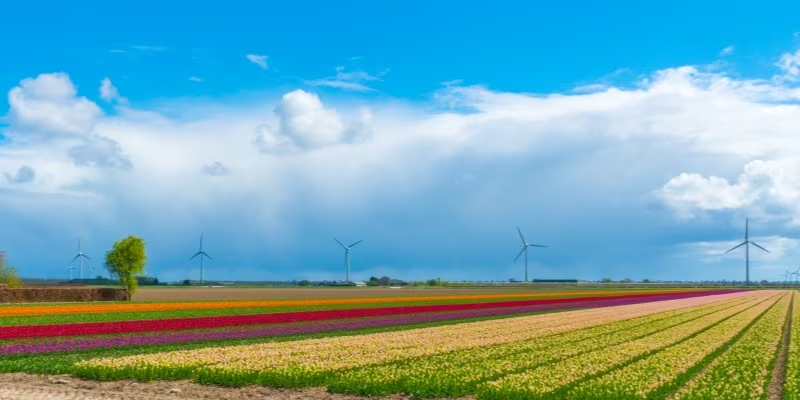Stay in the know on all smart updates of your favorite topics.
Demoday 27# District heating and resident participation in the municipality of Haarlemmermeer
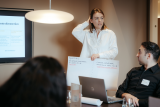
The municipality of Haarlemmermeer is actively working on the realisation of the energy transition in the municipality by, among other things, focusing on sustainable heat supplies. As part of this, a heat initiative has been started in the village of Rijsenhout (east of Haarlemmermeer). This initiative has not been taken up by the market in the past. This has led the municipality to want to take a more active role in the development of District heating in which resident participation is a crucial factor.
During the Knowledge- and Demodag on 13th of March (2025), Kelly Winters and Sophie Keijzer (Hieroo) led a session with the participants that looked at similar successful processes in the past of realising a heat network. The central questions were: What was the success and why was it a success?
Session structure and focus
During the session, the participants split into two groups. Similar processes were then discussed in the two groups in which the success factors of the realisation of energy transition projects were examined. An important example that was discussed in the session was the Schoonschip project in Amsterdam North. This project is a sustainable initiative in which residents have researched how they can live on the water in a circular and sustainable way. This resulted in a community of 46 houseboats that share energy with each other via a Smart Grid that’s cheaper and more efficient.
Outcomes and insights
During the session, various strategies were discussed to strengthen resident participation and make heat network initiatives successful. The most important points from the discussions are:
1. Composition of the initiator group: A diverse and enthusiastic group is crucial. In the Schoonschip project, the core of the success was a group of pioneers who complemented each other in creativity and expertise. Such a group can also be formed in Rijsenhout if they are properly guided and supported.
2. The role of the municipality: The municipality must be aware of the distrust that residents often have towards government institutions. Using an external intermediary or an independent entity can help to reduce this mistrust.
3. Reward and inspire: One way to involve residents in a low-interest topic such as energy is to reward them. Examples are setting up competitions, the use of ambassadors or energy coaches and the organisation of events. Linking opportunities, for example by combining energy transition with social goals such as combating energy poverty, can also play an important role.
4. Using the right moment: An important lesson from the Schoonschip project is to use external circumstances to arouse interest. A crisis, such as rising energy costs or limited energy production, can turn a low interest topic into a high interest topic for people.
5. Governance and structure: A solid Governance structure is essential. The municipality can play a role as a project manager by setting clear deadlines and formulating requirements. This helps both initiators and residents to keep focus and take steps towards concrete results.
Follow up
Do you have a tip to help the municipality of Haarlemmermeer with their district heating plans? Or do you have a question about this project? Contact Ouassim at Ouassim@amsterdaminchange.com or Noor at Noor@amsterdaminchange.com. Later this week on 27th of march, we'll dive into the technical problems that district heating poses, when there just isn't enough space in the underground to build it. If you would like to know more about this, let us know.
Ondanks congestie toch bedrijvigheid op Schiphol Trade Park

Wat in oktober 2020 begon als een urgent probleem – in het gebied waar Schiphol Trade Park in ontwikkeling was was geen extra transportcapaciteit meer mogelijk en de geplande bouw en uitbreiding moest noodgedwongen stoppen – is inmiddels opgelost. Onze baanbrekende virtuele netoplossing is daar nu namelijk ruim twee jaar in werking, en met succes: de bedrijven op Schiphol Trade Park zijn operationeel, breiden uit, en elektrificeren ondanks de netcongestie in het gebied.
Congestie op Schiphol Trade Park
Een blik op de congestiekaart maakt duidelijk dat Schiphol Trade Park in een door congestie grotendeels op slot gezet gebied ligt. Op het middenspanningsnet is geen extra capaciteit beschikbaar voor het transporteren van elektriciteit. Dat betekent dat er niet meer ontwikkeld wordt: een bedrijf krijgt namelijk wel een aansluiting, maar geen transportcapaciteit. Dit is niet alleen een probleem voor de bedrijven die zich hier willen vestigen, maar ook voor gebiedsontwikkelaar SADC (Schiphol Area Development Company), dat in 2020 nog de ambitie had om het meest duurzame business park van Europa te worden (en in 2023 door de BREEAM-NL Outstanding certificering zelfs het meest duurzame logistieke business park van de wereld is!). De ontwikkelaar wilde voorkomen dat bedrijven afzonderlijk een eigen oplossing zochten en er een wildgroei aan gasgeneratoren met de daarbij behorende uitstoot zou ontstaan. SADC zag dat dit slimmer, goedkoper en duurzamer kon, door op een innovatieve manier partijen te verbinden en te laten samenwerken. Bedrijven kunnen daardoor bouwen, uitbreiden en elektrificeren. Over de aanloop naar het project lees je meer op onze projectpagina.
Een doorbraak: de virtuele netoplossing
Alle bij de coöperatie aangesloten bedrijven delen hun eigen transportcapaciteit met elkaar. Zo maken ze slim gebruik van de gereserveerde ruimte. STELLAR Grid Management leest continu de slimme meters uit en stuurt de energiesystemen (zoals zonnepanelen, energie-opslag, en generatoren) achter de meter aan. Bovendien zorgen we voor de financiële afhandeling van deze aansturing, zodat de deelnemende bedrijven elkaar compenseren voor gebruikte elektriciteit en voor het beschikbaar stellen van hun stuurbare energiesystemen.
De resultaten van een jaar virtueel net
Het virtuele net is twee jaar actief. In het eerste jaar sloten zich nog gefaseerd bedrijven aan bij het collectief. De resultaten van dat jaar zijn voorspoedig, maar niet helemaal volledig.
Nu we een tijdje bezig zijn, delen we met vertrouwen onze resultaten. Voor deze resultaten keken we naar 2023. Zo nemen we dus alle seizoenen en bijbehorende energievraag mee in deze analyse.
Het collectief wordt goed benut: in 2023 is 2.104 MWh aan elektriciteitslevering extra mogelijk gemaakt door het delen van de capaciteit binnen het virtuele net. Zonder deze slimme oplossing hadden heel veel stuurbare energiesystemen, zoals batterijen en generatoren, deze elektriciteit moeten leveren. In het collectief nemen in totaal zeven bedrijven deel die weinig of geen netcapaciteit hebben. Dankzij deze slimme oplossing kunnen de bedrijven gebruikmaken van de beschikbare ruimte en opwek van de buren.
Om zeker te zijn van voldoende elektriciteit binnen de gestelde limieten hebben meerdere bedrijven geïnvesteerd in batterijen en gas- en dieselgeneratoren. Het collectief gebruikt die middelen als er een tekort aan capaciteit is. De generatoren dienen vooral als achtervang. Voordat STELLAR deze aanstuurt, bepaalt het systeem of de aangesloten batterijen kunnen voorzien in het verwachte moment van schaarste. Als de batterij niet voldoende is, schakelt STELLAR automatisch een generator in. In heel 2023 is ertwee keer een generator ingezet om binnen de netlimiet te blijven, voor in totaal 2 uur. Toen de generatoren aangingen waren de batterijen nog niet operationeel, anders waren die generatoren waarschijnlijk niet nodig geweest.
Zonder virtueel net hadden deze partijen moeten investeren in elk een eigen generator (en eventuele back-up generator). Die generatoren hadden gezamenlijk tot 31.000 draaiuren gemaakt. Dat is gelukkig voorkomen. Er is hiermee voor 468.000 m3 minder gas verbruikt, en daardoor is er lokaal 842 ton CO2 minder uitgestoten door generatoren.
Het virtuele net is dus een solide oplossing voor congestiegebieden. Dankzij de slimme aansturing zijn zeven bedrijven operationeel die zonder de virtuele netoplossing hadden moeten uitwijken naar een andere locatie in Nederland of daarbuiten,terwijl een aantal van hen al aan het bouwen was. En er is een enorme hoeveel CO2-uitstoot voorkomen.
De toekomst van Grid Management
We zijn trots op ons virtuele net bij Schiphol Trade Park. We horen ook een enorme urgentie in de markt: veel partijen worstelen met netcongestie en zoeken naar een vergelijkbare oplossing. Maar de toekomst van Grid Management is niet hapklaar. Het project bij Schiphol Trade Park is een pilot, en de voorwaarden van een standaard contractvorm voor een dergelijke collectieve oplossing (groeps-transportovereenkomst) zijn nog niet definitief vastgesteld.
Niet alleen bij Schiphol
Schiphol Trade Park is zeker niet de enige plek in Nederland waar sprake is van congestie. Eerder dit jaar lanceerden we onze oplossing bijvoorbeeld ook in het Zwolse Hessenpoort. Heb jij ook last van congestie? We denken graag met je mee. Neem contact met ons op.
Demoday #22: How can we continue to facilitate homeowners in driving the energy transition?
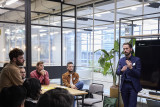
Grid congestion is becoming increasingly significant and will start to pose a problem in the low-voltage network in the coming years. This will prevent homeowners from transitioning away from gas, result in low efficiency for their solar panels, and could make it impossible to have a charging station at their doorstep. Alliander does not want to hinder the energy transition. Therefore, they are looking for a way to involve homeowners in the issue of grid congestion and provide solutions that are still feasible with a crowded grid.
In the energy work session on the 14th of December, Wouter van Rooijen (Alliander) discussed the challenges related to grid congestion. From 2030 onwards, it is expected that a significant portion of the low-voltage network will experience both over- and under-voltage. While the network will be reinforced as quickly as possible, the lack of labour capacity is also prompting the consideration of alternative solutions.
The solution that emerged from Wouter's co-creation process was WijkWise. In this work session, Wouter aimed to validate the WijkWise concept and find parties that could contribute to its development and market implementation. Dave van Loon from Kennisland moderated the session.
WijkWise – Understanding the neighbourhood's grid situation
The WijkWise concept focuses on three problems:
- The growth of grid congestion at low-voltage
- Homeowners' uncertainty about making sustainable investments. For instance, because they may not know if their solar panels will yield a good return.
- Homeowners' lack of awareness regarding the impact their choices have on the stability of the grid.
The proposed solution:
"With WijkWise, Alliander continues to facilitate homeowners in making their homes more sustainable. Alliander does this by providing insight into the neighbourhood's grid situation and recommending the best investment. Residents can make informed choices that contribute to payback time, comfort, and certainty. A good choice benefits both the homeowner and the grid operator."
The idea is to provide more insight into the neighbourhood's grid situation and offer tailored advice for home sustainability. This way, homeowners can determine whether they should invest in insulation, a heat pump, or solar panels.
Alliander does not want to develop this concept alone, but is seeking partners to bring this concept to market.
Discussion
After the concept presentation, a brief discussion followed. The main questions raised were:
- Can providing insight into the neighbourhood's grid situation have (negative) effects on the housing market?
→ They don't know yet; further investigation is needed. - Can this data be shared freely?
→ The data shared will be at the neighbourhood level (transformer level) and not in real-time (monthly). If there is user data involved, consent must be obtained. - What behaviour change do you expect?
→ That, during the investment moment, consideration will be given to the grid situation for the most advantageous investment.
After the discussion, we worked in groups with the Empathy Canvas from Kennisland to view the WijkWise concept from the perspective of the homeowners. This tool helped us really view the problems from the perspective of a homeowner.
Empathy Mapping
In three groups, we delved into the homeowner's situation. The recurring themes in the empathy maps were:
- A sense of unfairness for the homeowner. They invest in sustainability and are rewarded with grid congestion problems.
- A feeling of uncertainty for the homeowner. They want assurance that their investment will yield results.
- Little trust in the grid operator and the government. First, everyone had to get solar panels, and now suddenly it doesn't fit, and net metering is being discontinued (or not?)
- Limited understanding by homeowners because they find it very complicated and don't want to delve into it. It's not an urgent problem for them.
- Collaboratively seeking solutions can be very positive, but can also lead to friction.
Alliander plans to take the next steps with this concept in 2024. In 2024, they are planning to do the follow-up research, make the minimal viable product, and launch the first version of the product at the end of the year.
Do you know of any stakeholders that absolutely need to be involved, or would you like to be involved in the implementation of the WijkWise concept? Please contact Noor at noor@amsterdamsmartcity.com. Special thanks to Wouter and Dave for this interesting session.
De energietransitie vraagt om eerlijkheid en duidelijke randvoorwaarden
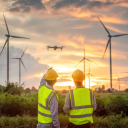
De energietransitie is een van de grootste uitdagingen van deze tijd. Nederland heeft tot nu toe goede stappen gezet, maar om de klimaatdoelen te behalen, moet er nog een flinke inhaalslag worden gemaakt. Wat is er nodig en wat is de rol van de overheid in deze transitie? Sander Oudmaijer en Ariën de Klerk, beiden werkzaam bij Monitor Deloitte, doen aanbevelingen gebaseerd op onze onlangs gepubliceerde Energie Transitie Monitor.
We hebben in Nederland de afgelopen decennia goede vooruitgang geboekt, máár om de klimaatdoelen van 2030 en daarna te halen, is er nog een flinke versnelling nodig, constateren Sander Oudmaijer, Director bij Monitor Deloitte, en Ariën de Klerk, Manager bij Monitor Deloitte. Ze baseren zich op de Energie Transitie Monitor (ETM) die Deloitte begin september gepubliceerde. Om de juiste keuzes te kunnen maken, hadden professionals uit de industrie, academici en beleidsmakers al langer behoefte aan een helder beeld en een gemeenschappelijke feitenbasis over de status van de energietransitie. De ETM biedt die huidige stand van zaken over de energietransitie in Nederland en laat zien wat ons te wachten staat.
Omvang van de Nederlandse emissies
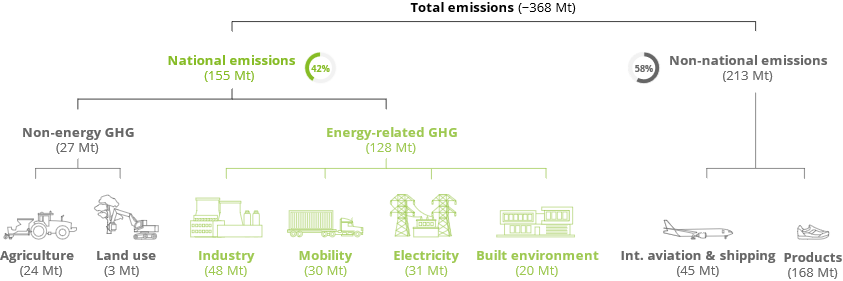
De Klerk: “Tot nu toe hebben we keuzes gemaakt die relatief weinig pijn deden. Het grootste deel van de vooruitgang boekten we door laaghangend fruit te plukken, en mee te liften op ontwikkelingen die zich sowieso al voordeden. Denk aan het terugdringen van de industriële productie, efficiëntiemaatregelen en het feit dat we meer gebruik maken van bestaande technologieën zoals zonne- en windenergie. Om de klimaatdoelen te halen, ontkomen we er niet aan om nu ook keuzes te gaan maken die pijn doen.”
Oudmaijer: “Om de doelstellingen uit het klimaatakkoord in 2030 te halen, moeten er 570 laadpalen per dag worden geïnstalleerd en moeten er tien emissievrije bussen per week bij komen. Daarbij zouden we de verwarming van 600 huizen per dag moeten elektrificeren en moeten we tot 2050 om de dag één windmolen bouwen. Om dat voor elkaar te krijgen zullen er fundamentele keuzes gemaakt moeten worden.”De Klerk: “De pleisters om kleine tekortkomingen te repareren raken op.”
Vertel het eerlijke verhaal
De rol van de overheid in de energietransitie is dan ook van groot belang, stellen Oudmaijer en De Klerk. De overheid schept de voorwaarden die nodig zijn om de doelen te kunnen behalen, en ze draagt tegelijk bij aan het vertellen van 'het eerlijke verhaal'. Oudmaijer: “Het is belangrijk dat er nu subsidies zijn voor elektrische auto's en allerlei duurzame maatregelen, maar dat houdt een keer op. De energietransitie gaat zowel burgers als bedrijven geld kosten. Dat eerlijke verhaal moet verteld worden.”
"De vraag is niet of we nog een windmolenpark gaan bouwen op zee óf op land, het moet allebei."
De Klerk: “Bovendien is het nog vaak een of/of-discussie, maar de vraag is niet of we nog een windmolenpark gaan bouwen op zee óf op land, het moet allebei. Daarbovenop zijn investeringen in andere vormen van energievoorziening, zoals bijvoorbeeld kernenergie, noodzakelijk. Ook dat is het eerlijke verhaal: het is en/en.”
Oudmaijer: “De ETM laat duidelijk zien wat er moet gebeuren. Een belangrijke vraag is vervolgens hoe je gemeenschappen meekrijgt met al deze ontwikkelingen. Eigenlijk wil niemand een windmolenpark in zijn achtertuin. Als overheid moet je daarom nadenken hoe je dit zo goed mogelijk kan faciliteren. Wellicht moeten de voordelen van wind- en zonne-energie op een directere manier terugvloeien naar bepaalde gemeenschappen, zodat zij enthousiaster worden en meer betrokken raken. Zoals bij het windpark Veur de Wind, waar omwonenden meeprofiteren van het park, in plaats van dat het ze met dwang werd opgelegd.”
De Klerk: “Al dit soort zaken vragen om een heldere visie vanuit de overheid. Het moet voor investeerders en bedrijven duidelijk zijn wat ze van de overheid kunnen en mogen verwachten en hoe die hen kan helpen. De overheid schept duidelijke randvoorwaarden voor de langere termijn. Als we om de dag een windmolen willen bouwen, dan moet onder meer de termijn om een vergunning te krijgen voor de bouw van een windmolenpark vele malen sneller dan nu het geval is.”
Win-winsituaties
We hebben in korte tijd veel werk te doen. Niettemin zijn volgens Oudmaijer en De Klerk de juiste bouwstenen aanwezig om dit succesvol aan te pakken. Denk bijvoorbeeld aan een innovatiecultuur, een al lang bestaande industriële sector en een toonaangevend onderwijssysteem. De uitdaging die voor ons ligt, is om al onze capaciteiten op vernieuwende wijze te orkestreren en de transitie te versnellen op een manier die samenleving, klimaat en economie ten goede komt.
De Klerk: “Wat je niet wilt is dat bedrijven hun deuren in Nederland sluiten en in een ander land met dezelfde uitstoot verdergaan. De vraag is dus hoe we ervoor zorgen dat we economische daad- en draagkracht houden zonder daarbij onze verantwoordelijkheid ten aanzien van het klimaat te verzaken. Oftewel, we moeten opnieuw kijken wat onze rol is in de energietransitie en waarin we willen investeren als B.V. Nederland. Belangrijk is dat die keuzes passen bij de capaciteit van ons land en hetgeen waar we goed in (willen) zijn.”
Oudmaijer: “We zijn in Nederland al een tijd bezig met waterstof, mede om de grote industrie te faciliteren. Als we ervoor kiezen om daar vol op in te zetten, dan zou de overheid met een duidelijke visie moeten komen. Stil staan bij vragen als: Op welke type waterstofdragers zetten we in? Waar willen we waterstof wel en niet voor gebruiken, en hoe gaan we dat als overheid faciliteren? De overheid zal een faciliterende rol moeten pakken, zodat bedrijven een afgewogen investeringsbeslissing kunnen maken. Bijvoorbeeld door te zorgen dat er sneller vergunningen worden afgegeven, het duidelijk is waarvoor we het willen gebruiken en door locaties aan te wijzen waar fabrieken gebouwd kunnen worden.”
De Klerk: “Een ander idee is om het North Sea Consortium te versterken door een visie en een uitvoeringsplan te creëren. Dat positioneert de Noordzee als een krachtcentrale van de Noordwest-Europese offshore op het gebied van windenergie- en waterstofproductie. Op die manier zet je Nederland neer als krachtpatser en dient het als een mondiale blauwdruk voor een succesvolle energietransitie.”
Oudmaijer: “Begin hiermee door als overheid een duidelijke visie neer te leggen en samen met het bedrijfsleven pilotprojecten te starten om uit te vinden wat wel en niet werkt. Een iteratief proces waarbij overheid en bedrijfsleven hand in hand de meest succesvolle initiatieven verder brengen, waardoor duidelijk wordt wat daadwerkelijk impact oplevert. De tijd om het laaghangend fruit te plukken is voorbij, het gaat nu om heldere keuzes en concrete acties!”
The next step for Local Energy Systems
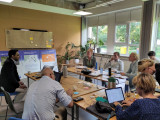
Thursday, the 30th of August, we had the first follow-up session about Local Energy Systems (LES) since the Transition day session in June. Over the summer Omar Shafqat (HvA, ATELIER), dr. Renée Heller (HvA), and Lennart Zwols (municipality of Amsterdam), have worked on finding a solution to the barriers to scaling up LES. They focused on the barrier of sharing information and learnings of LES projects. In this session, Omar presented a framework that could help overcome this barrier.
A barrier to scaling up LES: Lack of knowledge
In the previous session, we discussed how the difficulty with starting a new LES project is often that the information on how to do this is not readily available. Many pilots have been done, or are still ongoing, and there are definitely reports on the learnings of these pilots. Unfortunately, these learnings are not always available to everyone, and if they are, quite difficult to find and aggregate.
Lennart therefore proposed to make a framework in which we can gather all the information on LES pilots and projects, so we have a central place for the collecting and sharing of information. Omar and Renée have created this framework, which Omar presented in this session. The framework has three objectives:
1. Collecting the learnings of the pilots in one place.
2. Defining the gaps in our knowledge.
3. Creating a starting point for people who want to create their own LES.
Definition of a Local Energy System
To properly create a framework in which various information of relevant LES projects can be collected, it was necessary to have a good definition of a LES. Omar presented the definition as follows:
A local energy system is an interactive, non-linear system that must contain:
- Local generation
- Controllable demand
- Storage
- Energy Management Systems
- Energy communities
Hans Roeland Polman (AMS) commented that he was missing the infrastructure in this definition. Omar clarified that the lines between these five entities symbolize the infrastructure and that it is indeed an important component of LESs.
When we speak of LES it is always a balancing act. Different stakeholders have different objectives for implementing a LES, maximizing renewables, minimizing costs, flexibility/congestion, grid dependence, etc. This implies that the aspects of a LES are of differing importance to stakeholders, which is important to take into account with information gathering and sharing.
The first version of the framework for collecting information
After discussing the definition of LES, we dived into the framework. The goal of this framework is to have one format in which we collect information and learnings from all the LES pilots and projects (starting with the ones in our own network). This will allow us to speak a common language, easily compare projects, identify stakeholders and their interests, see where the knowledge gaps are, and more easily find specific information about LES.
Note: This framework is not the interface for the end-user. The framework should be used to catalogue information and learnings so that we have the information on all the different projects in the same format. We can then use this to build a user interface that end-users can interact with. How to best do this is still a topic of discussion.
The framework is presented below. On the x-axis, you can see the time scale. On the left you have the long-term (planning) phase, and on the right the short-term (management) phase.
On the left side, you can see the four areas in which the framework is divided:
- Policy
- Energy markets
- Energy systems
- Community/user aspects
The colour-coded third dimensions show which blocks relate to certain topics of interest, and should have information added on this topic. The topics of interest that have been added now are:
- Congestion
- Energy balance
It might be interesting to add others as well.
It was suggested by the group that electricity/heating might also be an interesting topic to add. Hans (AMS) also suggested that it would be interesting to add information about local infrastructure, such as a local heat network.
Discussion and questions
After the presentation of the framework a discussion followed. Many questions were raised which require further examination. A few of the key questions were:
- What should the scope be of this framework? Are we just looking at our own region, or do we want it to be used on a much larger scale?
- How do we connect to the other organizations and projects to this framework, and refrain from doing double work?
- Who is the owner of this framework and will keep it up to date?
- To make this framework usable for project managers, it should have a clear template that can be filled in. Who is going to make this, and how do we ensure that project managers of LES projects fill this in?
Next steps and call to action:
There are still many questions that need to be answered, and we will continue the research and learn by doing. We will start with the ATELIER and the LIFE project, to see if we can put them into this framework. This will be done by Omar (HvA, ATELIER), and Hans (AMS, LIFE). They will also create the first version of a template in which the information can be collected so that project managers can fill out this information. This will then be tested with the project managers of the LIFE project to see if the template and framework are indeed workable.
This will give a good starting point to see if the framework is suitable for the collection of information and learnings of LES projects. However, it will be far from complete. The ATELIER and LIFE projects don’t contain all the topics to properly test the framework and create templates for everything. We therefore need more partners with LES projects that can help test and develop this framework.
So if you are working on a Local Energy System project, and you would like to help further develop the framework, by giving feedback on the framework itself or using your project to validate the effectiveness of the framework, please let us know.
SAVE THE DATE | 10 Okt. - Kans voor ondernemers met duurzame oplossingen

Ben je een ondernemer met een duurzaam product of dienst en wil je écht impact maken? Kom dan naar het matchmaking evenement voor het unieke aanbestedingstraject Scale Up Toekomstbestendige kunstgrasvelden van de Gemeente Amsterdam en Haarlem. Elke ondernemer, die bij kan dragen aan innovatieve en duurzame toepassingen op en onder kunstgrasvelden, is welkom!
Datum: dinsdag 10 oktober 2023
Tijd: 13.30 – 18.00
Locatie: Johan Cruijff ArenA
Aanmelden
Meld je hier alvast aan als deelnemer van het evenement. Het definitieve programma volgt.
Tijdens dit evenement:
- Maak je kennis met het project Scale Up Toekomstbestendige kunstgrasvelden;
- Kom je erachter hoe ook jouw bedrijf hieraan kan bijdragen;
- Ontmoet je andere ondernemers met dezelfde visie;
- Word je geïnspireerd en uitgedaagd om out-of-the-box te denken;
- Vind je de perfecte match om later mee te doen aan de aanbesteding.
Meer informatie
Voor dit evenement zoeken we expliciet bedrijven uit diverse branches, die samen willen werken om het sportveld van de toekomst te ontwikkelen. Kijk hier voor meer informatie over dit project.
Disclaimer: Het is niet verplicht om deel te nemen aan het matchmaking event om mee te kunnen doen met de aanbesteding.
Met vriendelijke groet,
Team Scale Up Toekomstbestendige kunstgrasvelden
Transition day 2023: Local Energy systems, scale up, scale up, scale up

Energetic for energy
The technology is here. People and organizations are there. We have a lot of learnings from innovation pilots like Live and Atelier: we're all set. And yet, scaling up local energy systems like Live and Atelier seems to be incredibly difficult. What are the obstacles and barriers to scaling up these initiatives? These questions were the focus of the working session "local energy systems, scale up, scale up, scale up”. The partners unanimously recognized the issue of scaling up as it affected all of them, and enthousiastically engaged in the work session.
Barrieres for upscaling
Together we searched for the actual challenges where local energy systems can be a solution, and the barriers for upscaling. We looked at the first actionable follow-up steps to achieve the required upscaling.
We chose a <em>chair battle</em> as work format and had an open and honest conversation about the challenges we face. It was fascinating to see that sometimes the different stakeholders, despite having the same goal, cannot come to an agreement and this can lead to considerable frustration.
What we learned?
A lot! The picture report says more than a thousand words, but in short:
· We can only solve this challenge together; and that’s difficult
· Citizens and companies often do not know where to go and often do not know the existing possibilities
· We have the same goal, but there are many different interests
· The solutions are already there
And now?
We will continue the topic with great energy in the coming period and try to set up a fixed program structure to keep the development up to speed.
Do you want to know more about this challenge? Please let me know. patricia@amsterdamsmartcity.com
Op naar flexibel energiemanagement in en om de woning!

Op 15 december 2022 organiseren FAN, ElaadNL en TKI Urban Energy een mini-symposium rondom energiemanagement in en om de woning. Wij nodigen jullie van harte uit om dit event bij te wonen.
De opkomst van all-electric woningen en elektrische voertuigen (EV’s) leidt tot een forse stijging van de stroomvraag in woonwijken. Daarnaast zien we steeds meer duurzame opwek door zonne- en windenergie. Met deze energietransitie komt het elektriciteitssysteem langzaam maar zeker onder druk te staan: de vraag naar elektriciteit stijgt. Bovendien komt deze vraag niet verspreid over de dag, maar ontstaan op bepaalde momenten grote pieken; bijvoorbeeld als men allemaal rond etenstijd de elektrische auto inplugt na een werkdag. Ook overlapt de vraag naar elektriciteit vaak niet met de opwek van duurzame energie.
Home Energy Management gaat een rol spelen om balans te brengen in vraag en aanbod van elektriciteit, om overbelasting van het elektriciteitsnet te voorkomen en de opwek en gebruik van duurzame energie beter op elkaar af te stemmen: het flexibel aansturen van apparaten in en om de woning maakt het mogelijk om een deel van de vraag en het aanbod naar elektriciteit te veranderen, te verschuiven of uit te spreiden in de tijd.
Het uitgangspunt is dat digitale oplossingen en nieuwe slimme energiediensten de consument gaan helpen, dit kan door het gebruik van een Home Energy Management System (HEMS) die energieverbruik kan afstemmen op de beschikbaarheid van zelf opgewekte energie of voordelige energieprijzen.
Om de inzet van energiemanagement in en om de woning te versnellen en in goede banen te leiden is een goede samenwerking nodig tussen bedrijven uit de energiesector, installateurs, energie-coöperaties en leveranciers van gebouwsystemen, en de eigenaren en gebruikers van gebouwen. Dit onderzoek biedt inzicht wat er nodig is om energiemanagement in en om de woning verder op te schalen en hoe dit bereikt kan worden.
Je bent van harte uitgenodigd om dit mini symposium bij te wonen. We zien je graag op 15 december in het Testlab van ElaadNL in Arnhem, of ‘digitaal’ in het webinar.
Terugkijken SES community digitale sessie congestiemanagement 2.0 en financieringsregeling
Op dinsdag 5 juli, organiseerde de werkgroep slimme energie systemen (SES) van de Provincie Noord-Holland, TenneT en Liander een digitale sessie voor de SES community. Hierin vertelde Liander over congestiemanagement 2.0 en gaf de Provincie inzicht in de aankomende subsidieregeling voor SES projecten.
Updates ontvangen van en/of meedoen aan de community? Mail naar cato.bechtold@hiemstraendevries.nl
Amsterdam’s energy communities are driving a democratised energy future
In 2021, the city of Amsterdam has cooperated with citizen-led energy initiatives and The Democratic Society to bring about a decarbonised, decentralised energy future. Read the conclusions and six recommendations in the article by Kate Goodwin of the Democratic Society and Thomas de Groot of the Commons Network!
Circular strategies for mitigating surging critical metal demand
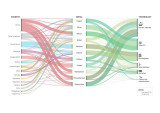
One of the biggest challenges for the transition to cleaner energy systems is the vast amount of critical metals required. But where do those metals come from, and what technologies are they needed for?
The Industries Team at Metabolic explored these questions and proposed circular strategies to reduce the critical metals demand significantly. Find out more about the project in the link below.
The challenges in the circular energy transition
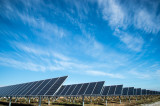
The energy transition is in full swing. Besides manpower, it requires a lot of materials, products and infrastructure. Windmills, solar panels, batteries and water pumps contribute fully to this transition, but are still hardly purchased, produced or reused in a circular manner. With the global economy changing and the shortages of raw materials growing, it’s important to look at the materials we use in the energy transition. How can we limit the negative impact of these materials needed for the energy transition?
It's clear that this question is on the minds of several partners. For example, at the Transition Days 2021, the Province of North Holland suggested that a knowledge agenda should be drawn up. In the meantime, our partners AMS Institute and the City of Amsterdam have started a project aimed at the reuse of solar panels in Amsterdam-Southeast and linked this with social issues. Next to that, the companies Pontiflex and Cenex Netherlands (in collaboration with the University of Applied Sciences) are focusing on the reuse of wind turbine components in new bridge structures and EV batteries.
On March 17, Amsterdam Smart City organized a work session during the Demoday Circular & Energy so our partners could discuss their input and vision on the importance of a circular energy transition. Some think it's important to have an ''integrated approach to circularity and energy'', others seek further ''stimulus that enables circular reuse of materials''. But if we want to scale up the energy transition circularly, what obstacles and opportunities do we see together? The challenges and obstacles are mapped for the different physical products via the digital tool Miro. Check out the English version of the Miro board here.
The key challenges raised by the participants:
1. Not all procurement procedures allow for circular material use or are limited to steel and concrete. Or requirements and criteria do not match.
2. Local and regional logistics in relation to transport and labor costs.
3. The business case: often a low financial return and therefore less attractive to the market. Practice shows that to be able to experiment, subsidy or other funding is needed.
4. Laws, regulations and certification of circular products stand in the way. Often the same norms and standards must be applied as for new products.
5. Education to encourage a new generation of students to work more with biobased and circular materials in projects
Now that the obstacles are visible, the challenge is to find a common approach. Through a follow-up session, Amsterdam Smart City will invite the partners again to think about the next steps. In the end we need each other to take the circular energy transition one step further.
If you have any thoughts on this topic or have a related question for us, please let us know in the comments or send an email to francien@amsterdamsmartcity.com.
Marktconsultatie energievoorziening Amsterdam-West: de resultaten

De stad Amsterdam groeit hard, de samenleving digitaliseert én we willen zo snel
mogelijk overstappen op duurzame energiebronnen. Deze factoren samen veroorzaken letterlijk spanningen op het elektriciteitsnet, onder andere in Amsterdam-West.
In het voorjaar van 2021 organiseerde de gemeente Amsterdam daarom samen met netbeheerder Liander een marktconsultatie. Het doel: creatieve en innovatieve ideeën ophalen om ons elektriciteitsnet zo flexibel, efficiënt en toekomstbestendig mogelijk te maken.
Hieronder vind je een greep uit de behaalde doelen en resultaten:
· Het bedrijfsleven denkt oplossingsgericht mee over de uitdagingen rondom de
elektriciteitsvoorziening
· Verkenning en inventarisatie van technieken die een bijdrage kunnen leveren aan het
versterken van ons elektriciteitsnet
· Inzicht in de laatste stand van zaken betreffende bekende technieken
· Update van actieve marktpartijen op het gebied van flexibiliteit
De volledige terugkoppeling van de marktconsultatie vind je via de link onder dit artikel.
Vervolgstap: voorbereiding aanbestedingsproject
De marktconsultatie heeft er mede toe geleid dat netbeheerder Liander voldoende kansen en mogelijkheden ziet om de uitdagingen rondom de elektriciteitsvoorziening in Amsterdam-West succesvol aan te pakken. Het bedrijf is daarom gestart met de voorbereiding van een aanbestedingstraject.
Bijeenkomst aanbesteding Westhaven
In het verzorgingsgebied van verdeelstation Westhaven is sprake van congestie. Als tijdelijke oplossing zal Liander in dit gebied congestiemanagement toepassen totdat het netwerk verzwaard is. Om bestaande en nieuwe klanten, dienstverleners en marktpartijen te informeren over het oplossen van de congestieproblematiek en de aanstaande aanbesteding, organiseert Liander een informatiebijeenkomst.
U bent welkom op woensdag 23 maart van 15-17 uur in de PRODOCK-ruimte van Port of Amsterdam (Moezelhavenweg 9, 1043 AM Amsterdam). Met vragen over de bijeenkomst kunt u terecht bij Stef Lammers (stef.lammers@alliander.com).
Consultation on energy supply in Amsterdam-West: the results

The city of Amsterdam is growing fast, society is digitizing and there is an urgency to switch to sustainable energy sources as soon as possible. Together, these factors are pushing the electricity network to its limits, also in Amsterdam-West.
In the spring of 2021 the City of Amsterdam, together with grid manager Liander, organized a market survey. The aim was collecting creative and innovative ideas to make the electricity network in Amsterdam as flexible, efficient and future-proof as possible.
Below is a selection of the goals and results that were reached:
· The business community agreed to think along solution-oriented lines about the challenges surrounding the electricity supply
· An exploration and inventory of technologies that can contribute to strengthening our electricity network was made
· Insight into the latest state of affairs regarding known techniques was gathered
· An update of active market players in the field of flexibility was provided
All information about the market consultation can be found here
Next step: preparation of the tender
One of the results of the market consultation was that grid manager Liander now sees sufficient opportunities and possibilities to successfully tackle the challenges surrounding the electricity supply in Amsterdam-West. The company has therefore started preparing a tender process.
Meeting about Westhaven tender
There is congestion in the catchment area of Westhaven distribution station. As a
temporary solution, Liander will apply congestion management in this area until
the network capacity is enhanced. Liander is organising a meeting to inform
existing and new customers, service providers and market parties about solving
the congestion problem and the upcoming tender process.
You are kindly invited in the PRODOCK room of Port of Amsterdam (Moezelhavenweg 9, 1043 AM Amsterdam) on Wednesday 23 March from 3-5 pm. If you have any questions regarding the meeting, please contact Stef Lammers (stef.lammers@alliander.com)
De duurzame toekomst van Amsterdams afvalwater
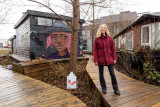
Als je de wc doortrekt, denk je waarschijnlijk niet na over wat er met het water gebeurt. Maar hier gaat een hele wereld achter schuil! En er wordt hard aan gewerkt, om die verborgen waterwereld duurzamer te maken. Als innovatietechnoloog bij Waternet houdt Enna zich bezig met het ontwikkelen van slimme afvalwatersystemen, en wij van De Gezonde Stad interviewden haar.
Wat is jouw droom voor Amsterdam?
“Dat water voor Amsterdammers meer waarde heeft. Dat we het meer respecteren. Nu is het zo vanzelfsprekend dat er water uit de kraan komt, zoveel en wanneer we maar willen. En we gaan naar het toilet, of onder de douche, of zetten de afwasmachine aan, en voor de bewoners is het water weg. Het zou fijn zijn als de hele cyclus meer circulair is. Dat afvalwater niet langer iets is wat vies is, maar dat we het gaan zien als een grondstof die we graag willen hergebruiken. Wat nou als je bij de bouwmarkt een toilet kan kopen die jouw urine apart houdt en daar meststof uithaalt die je zelf in je tuin kan gebruiken of af kan geven alsof het een statiegeldsysteem is. Dan krijgt het zoveel meer waarde.”
Lees op onze website het hele interview en leer de verborgen waterwereld kennen!
Some of the most inspiring projects of 2021 during our 14th Demoday!
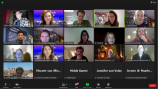
On December 14 2021, we had a very special demo day. Of course, it was the last of the year. As the Amsterdam Smart City core team, we are very proud of all the collaborations our partners and community started and that's why we wanted to highlight a few of them. To give the demoday a typical Christmas vibe, the pitchers had a 'gift' for the participants: their lessons learned that everyone could benefit from. And the participants had a gift in return: answers to the questions of the pitchers. In short, a demo day with new projects, questioning and sharing insights!
Responsible Sensing Lab and Drones
Hidde Kamst of the City of Amsterdam tells the participants about the Responsible Sensing Lab, a collaboration between the municipality and AMS Institute. This Lab works on the implementation of (social) values in technology in the city. Cameras and sensors in public space can put values such as privacy and anonymity under pressure. The Responsible Sensing Lab researches and designs alternatives. This also applies to the subject of Responsible Drones. A group of civil servants, companies and knowledge institutions worked on a vision on the responsible use of drones. The subjects 'proportionality', 'communications' and 'rules of the game' were discussed.
Hidde’s lessons learned: behind the scenes there are many parties working on drones, but the involvement of residents and civil society is low. It is important to change this because drones can have a big impact on our society. In addition, it is a complex topic where more research is needed. Hidde's request for help 'How do you convey the urgency of a subject that is important, but not yet urgent?' was very recognizable for the participants. A selection of their ideas: repeat the urgency over and over again, visualize the urgency, use storytelling and name the risks.
Shuttercam and Measuring Public Space
Pitch 2 had a big link with Hidde's story. Tom van Arman does various sensing projects on the Marineterrein, also covered by the Responsible Sensing Lab. An example is the Shuttercam, a camera that citizens can put on or off. In this way they can have an influence on the technology in the city. We start Tom's pitch with a question to the participants. Do they find it important that we measure a lot and collect data to improve the city or would they rather see more privacy for residents? A question that provokes discussion.
Tom has been engaged in measuring and testing in the public space for years, with an important role for public values. That's why he learned a lot of lessons: make sure you take the time to get legislation in order, take vandalism into account, do everything you can to make your work understandable for citizens. And a very nice one to remember: a hot camera attracts many insects. They block the image or get into the devices. One of the best tips he got from the participants: let passers-by write down what they see. That way you can get great feedback.
Braking energy and Pilot OV E-hub
André Simonse from Firan (Alliander) introduced us to the 'braking energy' issue, or as it is now is called: the OV E-hub pilot. This started as a search with partners such as AMS Institute, Arcadis, the City of Amsterdam, the
VRA and Alliander. Now the process evolved into a collaboration between Strukton Rail, Hedgehog Applications and Firan. Big cities can no longer cope with the increasing demand for sustainable energy. This makes it more difficult to access mobility hubs, such as stations, to provide electricity. It is therefore important to use existing energy smartly.
The lessons learned in this pitch were about taking action. Although talking is important for ideation and understanding and trusting each other, the art is to work together on a targeted plan for implementation. André's request for help was on how to organize political support. Willem from the City of Amsterdam wants to be part of the initiative and can help to achieve official support.
Social side of hubs
Willem van Heijningen of the City of Amsterdam took the floor to tell us more about its hub mission. A hub can organize mobility in an effective way. Together with others, he is looking how Q-park Europarking in the center of Amsterdam can be transformed to a hub. Think of shared mobility, charging cars and logistics, while preserving the monumental character of the city. Hearing the word ‘hub’, many people will think of a place to connect different forms of mobility. But it is also about energy. At some point, vehicles, vessels or even drones will come by. Since we want to get rid of fossil fuels, a hub will also become the place where these forms of mobility are charged. The success or failure of hubs is all in the hands of people. It depends on their behavior whether hubs will be useful. Until now, they have got too little attention. T
his is where Willem could use some help: What is needed to bring the social aspect of hubs further? How does the hub prove its effectiveness towards humans? A selection of the answers from the group: investigating the needs of the residents, connect with existing social initiatives in the city, involve local entrepreneurs.
ArenAPoort LIFE
Else Veldman and Hans Roeland Poolman from AMS Institute took us on a tour to their Southeast Energy Lab. This is a collaboration to accelerate sustainability in the southeast of Amsterdam through practical research, meetings and concrete projects. One of the current projects is the LIFE project, an open platform to plan energy supply and demand in a smarter, inclusive way. An enormous ambition that is driven by partners such as Johan Cruijff ArenA, Alliander, Spectral, CoForce and the Utrecht University. AMS Institute is committed to ensuring this platform is not only a technical contribution to the energy transition, but also provides social value to the inhabitants of South-East.
Hans and Else asked the network to think about the latter. The result was a tidal wave of tips to involve residents: co-develop communication strategies such as storytelling and visualization, pay attention to the result, the dream, show what it means to participate in the process, and above all, invest time.
New narrative for the energy transition
The last pitch was about the New Narrative where Kennisland and What Design Can Do on behalf of RES Noord-Holland have been working on. Dave van Loon from Kennisland told us that a new story about the energy transition is being developed to move away from the negative image, people's concerns and to give a new impulse to the energy transition. This narrative is based on a design thinking process. Subsequently, the organizations developed building blocks to focus on:
- a shared sense of urgency
- a positive future perspective
- inspiration by concrete and recognizable examples and success stories
- a sense of pride
- a way to take of action
Dave's request for help was for a reflection on this process. And the reactions were praising. On the one hand, the feedback focused on how to make the story as concrete as possible for the target groups and on the other hand on reaching the masses, while incorporating those who are left behind.
The next demoday will take in place in February or March. Do you have a nice story to tell or would you like to join as audience? You are more than welcome! Drop a line below to let us know!
Smart Energy Systems: een integrale en schaalbare weg naar duurzame bedrijventerreinen
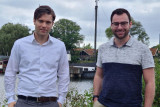
Door de bedrijven op bedrijventerreinen samen te laten werken aan integrale verduurzaming kan er op grote schaal duurzame energie opgewekt worden en CO2-uitstoot voorkomen worden. Samen met Greenchoice werken we aan een slim nieuw product: Smart Energy Systems.
CO2-uitstoot, onbenutte daken en netcongestie
Bedrijventerreinen zijn grootverbruikers van elektriciteit en bieden met hun grote dakoppervlakten ongekende mogelijkheden voor duurzame energieopwek. Toch wordt er op dit moment nog lang niet maximaal ingezet op de verduurzaming van deze gebieden. En als het al gebeurt, wordt kennis en kunde niet gedeeld, en worden oplossingen niet integraal op het hele terrein uitgevoerd. In plaats van samenwerken wordt er ingezet op de verduurzaming van één pand zonder te kijken naar de mogelijkheden om samen te verduurzamen, waar dan ook het teveel aan opgewekte energie teruggeleverd wordt aan het energienet. Dat verergert de al bestaande problemen met netcongestie.
Smart Energy Systems
In Smart Energy Systems hebben deelnemende bedrijven de keuze uit een ‘menukaart’ aan maatregelen. Daarop staan opties variërend van het plaatsen van zonnepanelen tot inzicht in verbruik tot het timen van je verbruik met je eigen opwek. Door die integrale aanpak en omdat meerdere bedrijven op het terrein tegelijkertijd verduurzamen kan er meer en sneller worden verduurzaamd.
Plug and play
Vanaf eind oktober begint de pilot bij drie bedrijventerreinen. De verwachtingen zijn hoog. Niet alleen voor de deelnemende bedrijventerreinen, maar ook voor toekomstige deelnemers. Door de ontwikkelingen op de markt goed in de gaten te houden en een vinger aan de pols te houden bij de pilotpartijen werken we aan de uitbreiding van de menukaart met nog meer duurzame en rendabele maatregelen, een gepersonaliseerde roadmap per terrein en een kopieerbare standaard voor nog meer impact.
Restwarmte Noord-Hollandse industrie kan hele provincie verwarmen
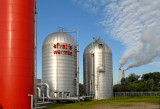
De Omgevingsdienst Noordzeekanaalgebied heeft in opdracht van de provincie Noord-Holland onderzoek gedaan naar de hoeveelheid beschikbare restwarmte in de Noord-Hollandse industrie. Het onderzoek geeft een eerste indicatie van hoeveel warmte er in Noord-Holland nu nog via industriële schoorstenen de lucht in gaat en hoeveel warmte er via het koelwater op het oppervlaktewater wordt geloosd. Met deze gegevens kunnen gemeenten en warmtebedrijven hun plannen voor nuttig hergebruik van restwarmte verder vormgeven.
Bijna alle relevante bedrijven in beeld
65 bedrijven in onder meer de energiesector, de chemische- en voedselindustrie, en afvalverwerkende bedrijven zijn meegenomen in het onderzoek. Deze bedrijven zijn verantwoordelijk voor meer dan 95 procent van de potentiële restwarmte. Hiermee zijn dus nagenoeg alle relevante industriële bedrijven in Noord-Holland in beeld. Of de warmte daadwerkelijk gebruikt kan worden voor verwarming van woningen is afhankelijk van onder meer de temperatuur en de afstand tot een warmtenet.
Gratis ophalen
Per 2022 komt er met de Wet Collectieve Warmtevoorziening een stimulans voor het gebruik van restwarmte in de gebouwde omgeving: producenten van restwarmte moeten deze dan gratis beschikbaar stellen aan energiebedrijven.
We avoided 2.071 tonnes of CO2 emission in 2020!
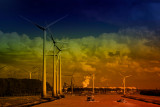
We avoided 2.071 tonnes of CO2 emission in 2020. The amount equals to 207 people’s yearly CO2 emissions. Are you wondering how we did it? Read our Impact Report!
Zoncoalitie - Altijd de beste keuze

Wat eind 2015 begon als een ambitieus initiatief vanuit Amsterdam Smart City, groeide uit tot een volwaardige en professionele organisatie dat nu alweer enkele jaren op eigen benen staat. Een mooi resultaat uit een jarenlange samenwerking met tientallen partijen, waaronder Alliander, de Gemeente Amsterdam, Tertium en natuurlijk de Zoncoalitie-leden zelf! Super gaaf om te zien hoe ver ze zijn gekomen. Mede dankzij de Zoncoalitie wordt het steeds makkelijker voor vastgoedeigenaren en gemeenten om zonnestroom van daken te krijgen.
Benieuwd waarom ik er over begin? De Zoncoalitie heeft een nieuwe bedrijfsvideo gelanceerd.
Klik hier om het te bekijken!
Stay up to date
Get notified about new updates, opportunities or events that match your interests.
